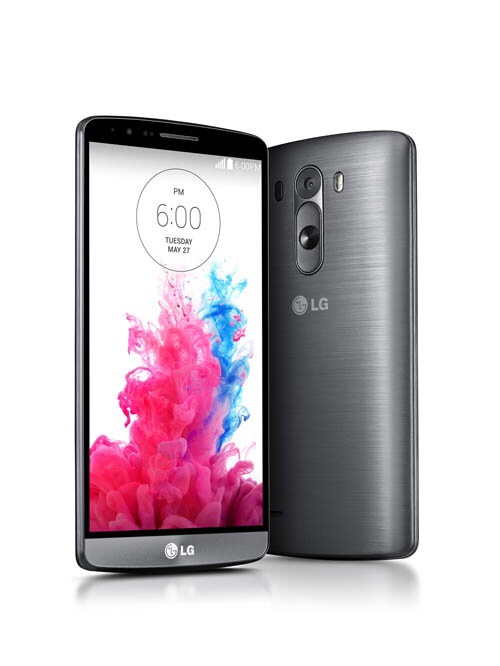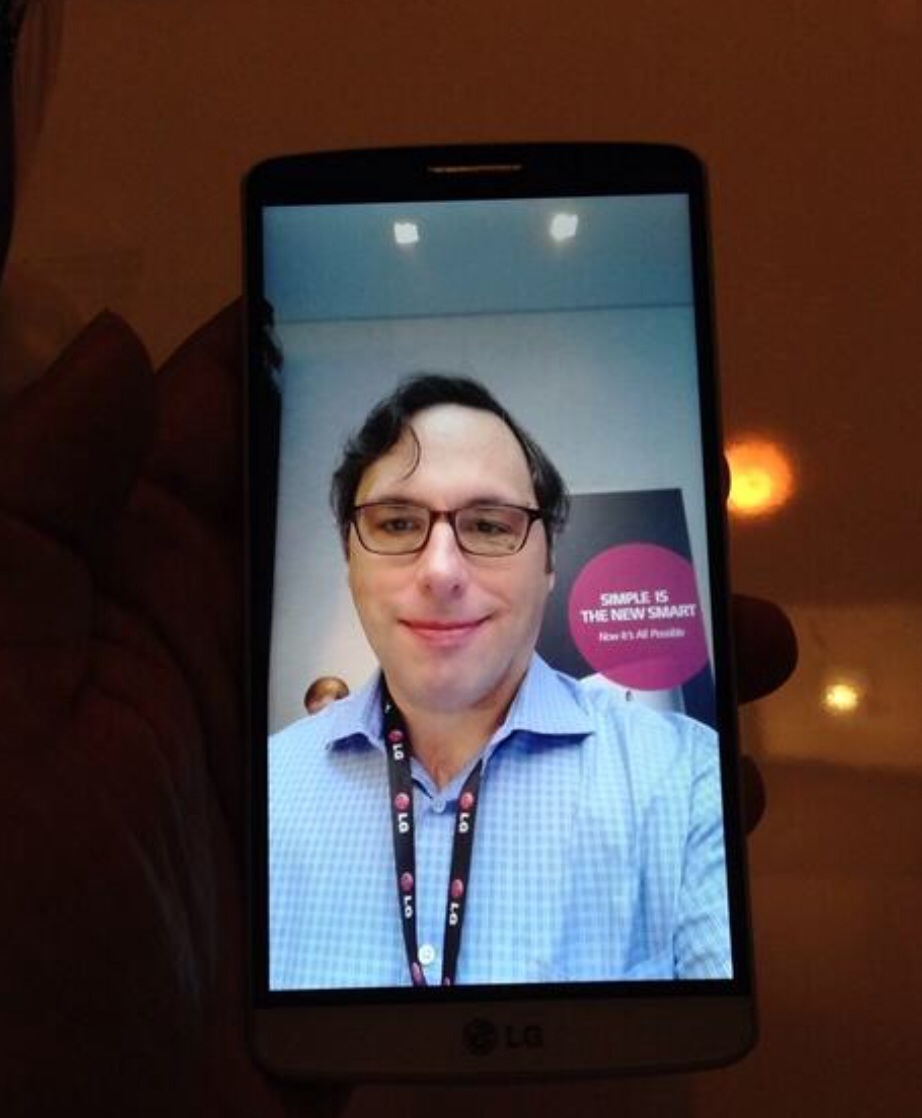
In the Android-based smartphone wars–in the U.S., at least–LG has kept a relatively low profile. Its Korean arch-rival, Samsung, dominates the market with its Galaxy models. HTC aspires to be the category’s class act with its One handsets. And it’s been unclear what LG was, aside from yet another large manufacturer of credible Android phones.
The company just announced its new model, the G3, at a splashy London launch, with satellite events elsewhere such as the one I attended in San Francisco. I heard LG executives extoll the phone’s virtues, then got a bit of hands-on time with an early model (very early–part of its interface was still in Korean). That’s not enough to come to any firm conclusions about the G3, but it looks a smartphone which will merit being taken seriously.
And LG is definitely trying to carve off a clear identity for itself. It hammered home its marketing pitch for the phone — “Simple is the New Smart” — by repeating it at every opportunity during the event. Heaven knows that the average Android phone still isn’t as straightforward as it might be, in part because hardware manufacturers’ “improvements” often add clutter and inconsistency. Erring on the side of simplicity is therefore a worthy goal.
The G3 has an expansive 5.5-inch display–big enough to place it in that popular-but-ungainly-named phablets category. LG doesn’t seem especially eager for people to think of this phone as a phablet, though: During its event, it emphasized that the phone, at 5.76 inches wide, is only a bit bulkier than a 5.1-inch phone.
That 5,5-inch display packs a “quad HD” resolution of 1440-by-2560 pixels, for a pixel-per-inch count of 538–way beyond what the iPhone 5 (326 ppi) and Galaxy S5 (432 ppi) offer. In fact, the conventional wisdom is that a resolution as high as that offered by the G3 is purely an act of specsmanship; the human eye supposedly isn’t capable of detecting a difference between it and a lower resolution.
LG argues otherwise, although its explanation involved showing images blown up to appear on humongous screens at its London venue–which means that its comparison had nothing to do with what our eyes can make out on a smartphone display. Still, the screen on the G3 I examined looked awfully pretty.

The other intriguing G3 feature its the auto-focus capability on its 13-megapixel camera, which uses a laser. That, combined with the camera’s optical stabilization and dual-LED flash, might make for better photos when you’re shooting on the go or in dim environments. The phone is also designed to appeal to the selfie set: You can hold up your hand and then make a fist, whereupon the handset will do a quick countdown and then snap a picture of you with its front camera.
That’s about it for major new hardware features: There’s no fingerprint scanner or heart-rate monitor or anything else which treads the fine line between useful addition and silly gimmickry.
Like other makers of Android phones, LG has tweaked the operating system’s interface, but it doesn’t look like it’s done so with too heavy a hand. The company says that it’s aimed for a “mature” color palette, and it’s following a current trend by using round icons in some places. There’s also a notification system which does things such as let you respond to incoming calls with a text message.
Industrial design-wise, the G3 looks polished: Along with the Galaxy S5, it’s one of a shrinking number of phones with a pop-off back and a removable battery, but the back is metallic and considerably more upscale than the Galaxy S5’s bedimpled plastic one. In a wacky feature carried over from the G2, the power and volume controls are on the back, on a multi-purpose button located below the camera, leaving the phone with no buttons or other controls on its front or edges.
The G3 is available now in its home market of South Korea. Those of us in the U.S. will have some time to ponder the model before it goes on the market: It’ll be available on AT&T, Sprint, T-Mobile and Verizon sometime this summer, at a price to be announced.
More Must-Reads from TIME
- Cybersecurity Experts Are Sounding the Alarm on DOGE
- Meet the 2025 Women of the Year
- The Harsh Truth About Disability Inclusion
- Why Do More Young Adults Have Cancer?
- Colman Domingo Leads With Radical Love
- How to Get Better at Doing Things Alone
- Michelle Zauner Stares Down the Darkness
Contact us at letters@time.com